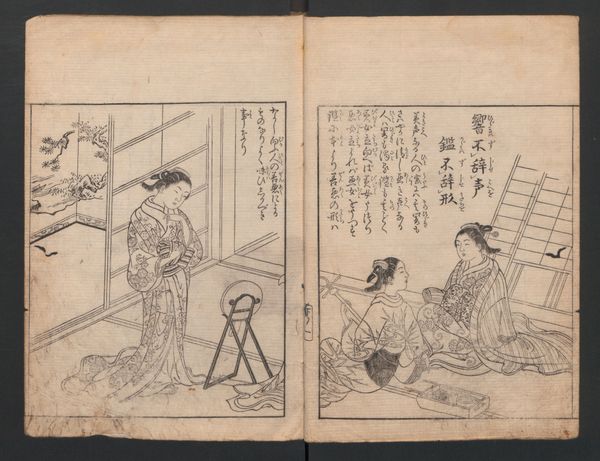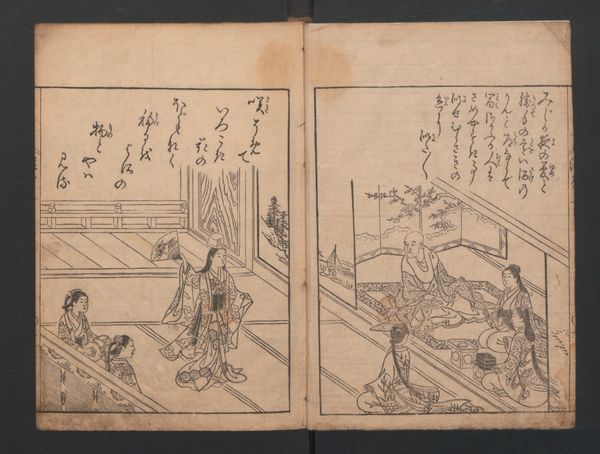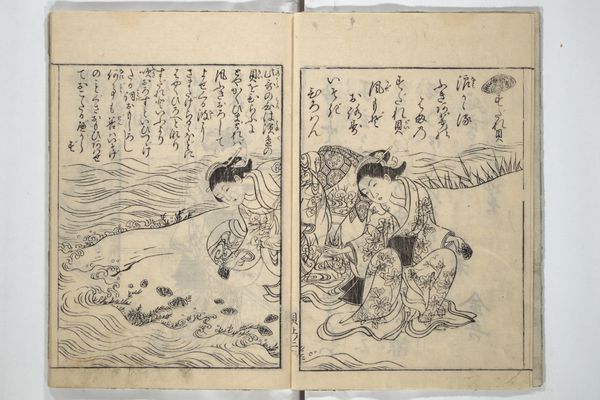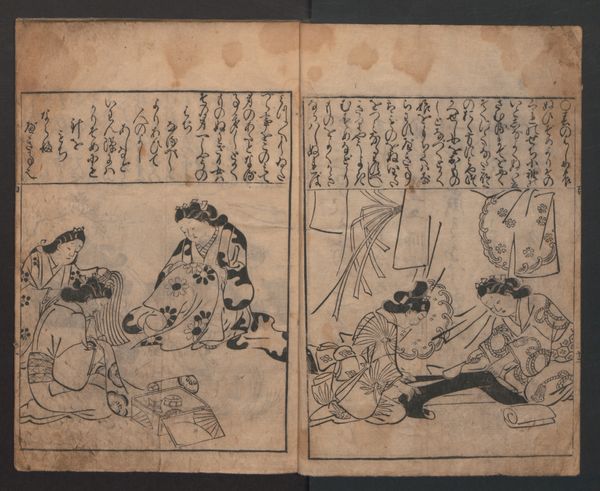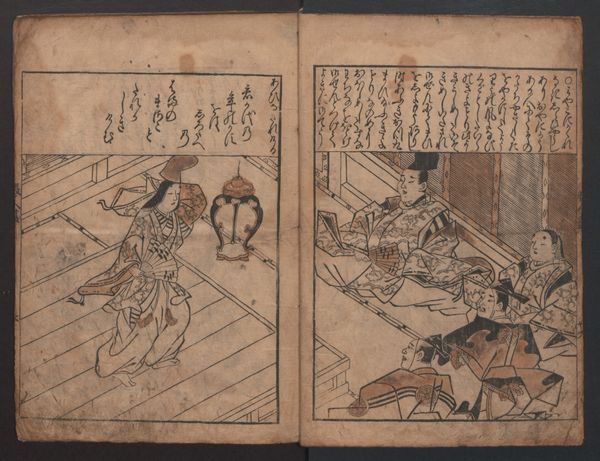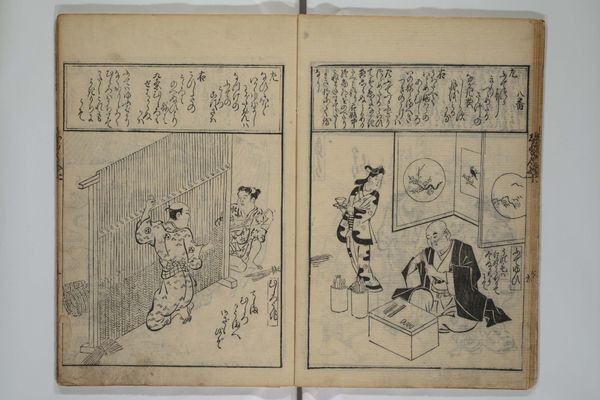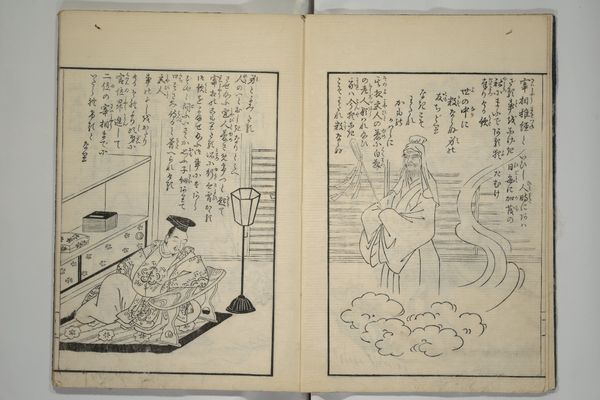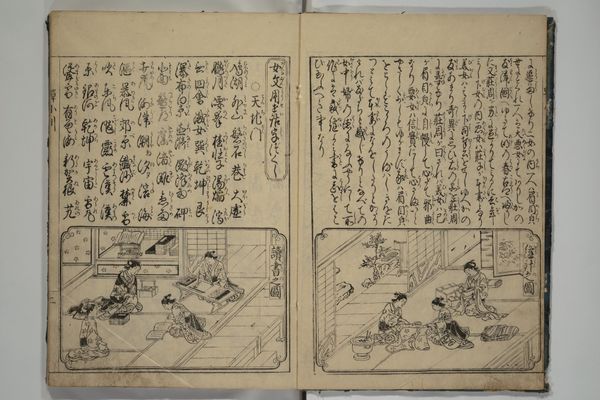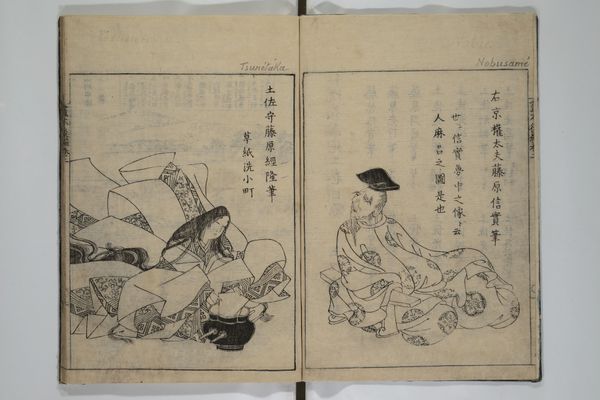
drawing, print, paper, ink
#
portrait
#
drawing
#
narrative-art
# print
#
book
#
asian-art
#
ukiyo-e
#
paper
#
ink
#
genre-painting
Dimensions: Each: 9 × 6 3/8 × 1/4 in. (22.9 × 16.2 × 0.6 cm)
Copyright: Public Domain
Editor: Here we have *Ehon Genji Monogatari* by Terai Shosen, a print drawing on paper created in 1751. Looking at the composition, the scenes almost feel staged, and there's a strong contrast between the detailed foreground and the relatively sparse backgrounds. What’s your take on this piece? Curator: It's crucial to examine how these Ukiyo-e prints were produced and consumed. We often overlook the labor involved in woodblock printing - the carvers, the printers, and the publishers, each playing a vital role in shaping the final product. Editor: Right, so the materials themselves tell a story. What does that story convey here? Curator: Consider the accessibility of printed books during this period. Were they luxury goods? Who could afford them? The subject matter, scenes from *The Tale of Genji*, points to a sophisticated and elite audience, but the printing method allowed for wider circulation than hand-painted scrolls. We should also analyze the ink, paper, and woodblocks, mapping out trade routes and networks to appreciate the work fully. Editor: I see, the materials weren't just passive elements. They were active participants in culture and consumption. Curator: Precisely! Also consider the artistic process: the division of labor. Terai Shosen probably designed this image, but a team of artisans produced it. Where does his artistry end, and their labor begin? How do these production methods question our conventional notion of singular artistic authorship? Editor: That definitely offers a new lens through which to appreciate the work—to not only understand the image itself but its journey from conception to consumption. Curator: Absolutely. Understanding the material and production enables a broader insight.
Comments
No comments
Be the first to comment and join the conversation on the ultimate creative platform.
